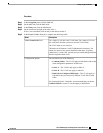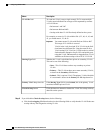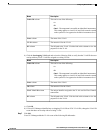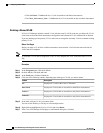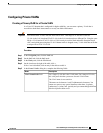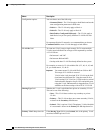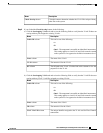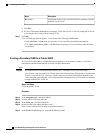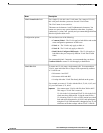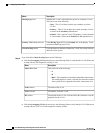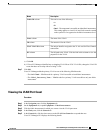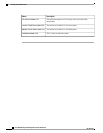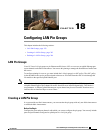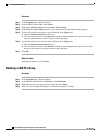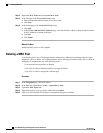
DescriptionName
For a single VLAN, this is the VLAN name. For a range of VLANs,
this is the prefix that the system uses for each VLAN name.
The VLAN name is case sensitive.
This name can be between 1 and 32 alphanumeric characters. You
cannot use spaces or any special characters other than - (hyphen), _
(underscore), : (colon), and . (period), and you cannot change this name
after the object has been saved.
VLAN Name/Prefix field
You can choose one of the following:
• Common/Global—The VLANs apply to both fabrics and use the
same configuration parameters in both cases
• Fabric A—The VLANs only apply to fabric A.
• Fabric B—The VLAN only apply to fabric B.
• Both Fabrics Configured Differently—The VLANs apply to
both fabrics but you can specify different VLAN IDs for each
fabric.
For upstream disjoint L2 networks, we recommend that you choose
Common/Global to create VLANs that apply to both fabrics.
Configuration options
To create one VLAN, enter a single numeric ID. To create multiple
VLANs, enter individual IDs or ranges of IDs separated by commas.
A VLAN ID can:
• Be between 1 and 3967
• Be between 4048 and 4093
• Overlap with other VLAN IDs already defined on the system
For example, to create six VLANs with the IDs 4, 22, 40, 41, 42, and
43, you would enter 4, 22, 40-43.
You cannot create VLANs with IDs from 3968 to 4047.
This range of VLAN IDs is reserved.
VLANs in the LAN cloud and FCoE VLANs in the SAN
cloud must have different IDs. Using the same ID for a
VLAN and an FCoE VLAN in a VSAN results in a critical
fault and traffic disruption for all vNICs and uplink ports
using that VLAN. Ethernet traffic is dropped on any VLAN
which has an ID that overlaps with an FCoE VLAN ID.
Important
VLAN IDs field
Cisco UCS Manager GUI Configuration Guide, Release 2.0
OL-25712-04 289
Configuring Private VLANs



